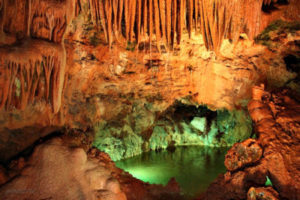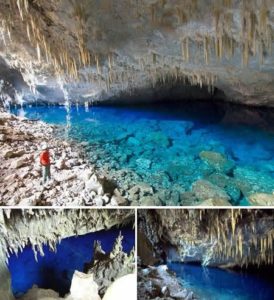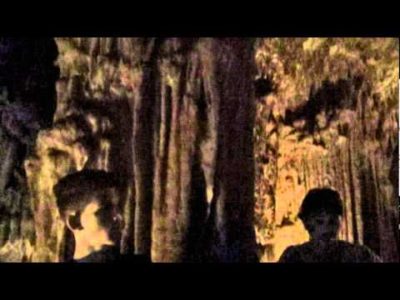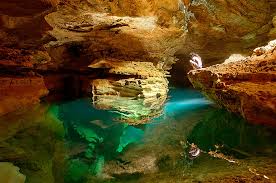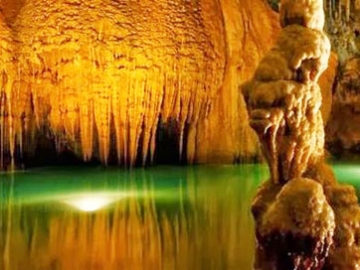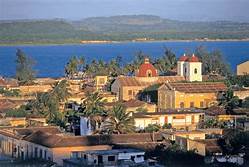LAS CUEVAS DE BELLAMAR, LA JOYA DE LAS CAVERNAS NATURALES DE CUBA. PHOTOS
Las cuevas están ubicadas en la ciudad de Matanzas, a unos 40 km (25 millas) al este de Jibacoa. Estas cuevas están abiertas al público desde la década de 1860, son consideradas uno de los atractivos de los visitantes más antiguos de Cuba; ellos. También es una de las cuevas naturales más largas y profundas del país.
Por la belleza de sus galería y cavernas y por nuevos hallazgos paleontológicos, además de una amplia gama de procesos cristalinos fueron declaradas Monumento Nacional.
Los impresionantes salones y galerías están llenos de hermosas estalactitas y estalagmitas, corrientes subterráneas, cristales krásticos, fuentes, cúpulas cristalizadas y algunas otras formaciones de piedra caliza únicas. Aquí también se han encontrado pinturas indígenas y fósiles.
El área explorada tiene 3 km (1,9 millas) de largo y contiene 28 habitaciones; el área abierta a los visitantes tiene aproximadamente 1 km (0,6 millas) de largo.
Las galerías y pasadizos de las Cuevas de Bellamar se calcula que comenzaron a formarse hace unos 300 mil años. Según los estudiosos, la planicie en la cual están las cuevas se encontraba originalmente bajo el mar, formando parte de la bahía de Matanzas. A lo largo de la llamada Falla de Bellamar el agua subterránea, en combinación con el dióxido de carbón, fue disolviendo la roca calcárea y de esta forma fue creando cámaras subterráneas en el subsuelo; bajo el fondo marino.
Mientras permanecieron bajo el nivel del mar, estas cavernas estuvieron llenas de agua. Los movimientos tectónicos hicieron que la zona se elevara, hasta llegar a formar las terrazas marinas que se notan en la ciudad de Matanzas y sus alrededores.
Con el decursar del tiempo estas cavernas se fueron secando; desaguándose incluso algunas cavidades que están a gran profundidad bajo el nivel del mar y comenzaron a tener lugar filtraciones entre las rocas, sobre el techo de las cuevas, de agua con carbonato de cal disuelto que fueron dejando residuos al gotear y, de ese modo formar las estalactitas desde el techo y las estalagmitas en el suelo.
Llamadas originalmente las Cuevas de Parga en homenaje a su descubridor, el punto cambió su nombre por el de Las Cuevas de Bellamar, en plural, (aunque los especialistas indican que se trata de una sola cueva con varios salones) debido a su cercanía con la playa homónima en el oeste matancero.
MAS RECIENTES DESCUBRIMIENTOS DE SU INTERIOR…
De relevante interés científico valoran aquí los nuevos hallazgos en un segmento del Sistema Cavernario Bellamar. En la centenaria cueva un grupo de espeleólogos descubrieron una estrecha cavidad que los condujo a otra prolongación subterránea de unos nueve kilómetros de longitud. Para sorpresa de todos, encontraron allí galerías de incomparable belleza.
Se trata de formaciones cilíndricas pendientes de estalactitas, y suspendidas en el aire, en cuyos extremos cuelgan un conglomerado de cristales macizos de calcita.Por su dimensión y rareza los especialistas consideran el descubrimiento como joya exclusiva, incomparable con ningún otro hallazgo de su tipo. Son formaciones indescriptibles, por cuanto en ningún otro lugar del planeta se conoce semejante cristalería de carbonato de calcio.
En exploraciones continuadas por el grupo espeleológico Félix Rodríguez de la Fuente, aparecieron otros descubrimientos paleontológicos de significativo interés científico, como restos de vertebrados terrestres y aves cuya antigüedad la estiman en millones años.
Entidades especializadas contabilizan a lo largo y ancho de la isla más de 10 mil cuevas, muchas de ellas con unos 25 millones de años de evolución, pero hasta nuestros días las Cuevas de Bellamar sigue siendo la reina y paraiso de los visitantes a sus entornos.
THE CAVES OF BELLAMAR, ARE THE JEWEL OF THE NATURAL CAVES OF CUBA. PHOTOS
The caves are located in the city of Matanzas, about 40 km (25 miles) east of Jibacoa. These caves have been open to the public since the 1860s, they are considered one of the oldest visitor attractions in Cuba;. It is also one of the longest and deepest natural caves in the country.
Due to the beauty of its galleries and caverns and due to new paleontological findings, in addition to a wide range of crystalline processes, they were declared a National Monument.
The impressive halls and galleries are filled with beautiful stalactites and stalagmites, underground streams, krastic crystals, fountains, crystallized domes, and some other unique limestone formations. Indigenous paintings and fossils have also been found here.
The explored area is 3 km (1.9 mi) long and contains 28 rooms; the area open to visitors is about 1 km (0.6 mi) long.
It is estimated that the galleries and passageways of the Cuevas de Bellamar began to form about 300,000 years ago. According to scholars, the plain in which the caves are located was originally under the sea, forming part of the Matanzas Bay. Along the so-called Bellamar Fault, the underground water, in combination with carbon dioxide, was dissolving the calcareous rock, and in this way, it was creating underground chambers in the subsoil; under the seabed.
While they remained below sea level, these caverns were filled with water. The tectonic movements caused the area to rise until it formed the marine terraces that can be seen in the city of Matanzas and its surroundings.
With the passing of time, these caverns dried up; draining even some cavities that are deep below sea level and leaks began to take place between the rocks, on the ceiling of the caves, of water with dissolved lime carbonate that left residues as they dripped and, in this way, form the stalactites from the ceiling and the stalagmites on the floor.
Originally called the Cuevas de Parga in homage to its discoverer, the point changed its name to Las Cuevas de Bellamar, in the plural, (although specialists indicate that it is a single cave with several rooms) due to its proximity to the homonymous beach in the west of Matanzas.
MORE RECENT DISCOVERIES FROM THE INTERIOR…
Of relevant scientific interest, the new findings in a segment of the Bellamar Cave System are valued here. In the century-old cave, a group of speleologists discovered a narrow cavity that led them to another underground extension of about nine kilometers in length. To everyone’s surprise, they found galleries of incomparable beauty there.
These are cylindrical formations hanging from stalactites, and suspended in the air, at whose ends hang a conglomerate of solid calcite crystals. Due to its size and rarity, specialists consider the discovery an exclusive jewel, incomparable with any other find of its kind. They are indescribable formations because nowhere else on the planet is such calcium carbonate glassware known.
In continued explorations by the Félix Rodríguez de la Fuente speleological group, other paleontological discoveries of significant scientific interest appeared, such as remains of terrestrial vertebrates and birds whose age is estimated at millions of years.
Specialized entities count more than 10,000 caves throughout the island, many of them with about 25 million years of evolution, but to this day the Cuevas de Bellamar remain the queen and paradise for visitors to their surroundings.
Agencies/ Wiki/ Ecured/ Extractos/ Excerpts/ Internet Photos/ Arnoldo Varona/ www.TheCubanHistory.com
THE CUBAN HISTORY, HOLLYWOOD.



 LAS CUEVAS DE BELLAMAR, la Joya de las Cavernas Naturales de Cuba. PHOTOS. * THE CAVES OF BELLAMAR, are the Jewel of the Natural Caves of Cuba. PHOTOS.
LAS CUEVAS DE BELLAMAR, la Joya de las Cavernas Naturales de Cuba. PHOTOS. * THE CAVES OF BELLAMAR, are the Jewel of the Natural Caves of Cuba. PHOTOS.